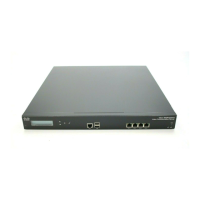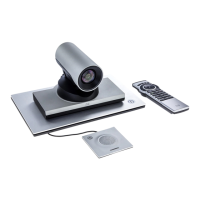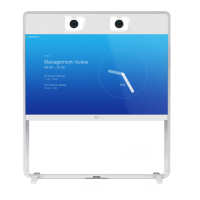SIP Registration Standard Refresh Strategy: <Maximum/Variable>
The method used to generate the SIP registration expiry period for standard registrations. Default: Maximum.
Maximum: uses the lesser of the configured maximum refresh value and the value requested in the registration.
Variable: generates a random value between the configured minimum refresh value and the lesser of the configured maximum
refresh value and the value requested in the registration.
Example: xConfiguration SIP Registration Standard Refresh Strategy: Maximum
SIP Require Duo Video Mode: <On/Off>
Controls whether the VCS requires the use of the com.tandberg.sdp.duo.enable extension for endpoints that support it. Default: On.
Example: xConfiguration SIP Require Duo Video Mode: On
SIP Require UDP BFCP Mode: <On/Off>
Controls whether the VCS will require the use of the com.tandberg.udp.bfcp extension for endpoints that support it. Default: On.
Example: xConfiguration SIP Require UDP BFCP Mode: On
SIP Routes Route [1..20] Address: <S:0,39>
Specifies the IP address of the next hop for this route, where matching SIP requests will be forwarded. Note: this command is
intended for developer use only.
Example: xConfiguration SIP Routes Route 1 Address: "127.0.0.1"
SIP Routes Route [1..20] Authenticated: <On/Off>
Whether to forward authenticated requests. Default: Off. Note: this command is intended for developer use only.
On: only forward requests along route if incoming message has been authenticated.
Off: always forward messages that match this route.
Example: xConfiguration SIP Routes Route 1 Authenticated: On
SIP Routes Route [1..20] Header Name: <S:0,64>
Name of SIP header field to match (e.g. Event). Note: this command is intended for developer use only.
Example: xConfiguration SIP Routes Route 1 Header Name: "Event"
SIP Routes Route [1..20] Header Pattern: <S:0,128>
Regular expression to match against the specified SIP header field. Note: this command is intended for developer use only.
Example: xConfiguration SIP Routes Route 1 Header Pattern: "(my-event-package)(.*)"
SIP Routes Route [1..20] Method: <S:0,64>
SIP method to match to select this route (e.g. INVITE, SUBSCRIBE). Note: this command is intended for developer use only.
Example: xConfiguration SIP Routes Route 1 Method: "SUBSCRIBE"
SIP Routes Route [1..20] Port: <1..65534>
Specifies the port on the next hop for this route to which matching SIP requests will be routed. Default: 5060. Note: this command is
intended for developer use only.
Example: xConfiguration SIP Routes Route 1 Port: 22400
SIP Routes Route [1..20] Request Line Pattern: <S:0,128>
Regular expression to match against the SIP request line. Note: this command is intended for developer use only.
Example: xConfiguration SIP Routes Route 1 Request Line Pattern: ".*@(%localdomains%|%ip%)"
SIP Routes Route [1..20] Tag: <S:0,64>
Tag value specified by external applications to identify routes that they create. Note: this command is intended for developer use only.
Example: xConfiguration SIP Routes Route 1 Tag: "Tag1"
Cisco VCS Administrator Guide (X8.1.1) Page 446 of 507
Reference material
Command reference — xConfiguration

